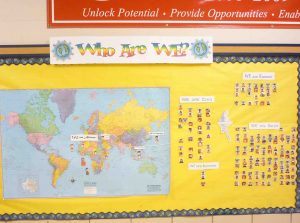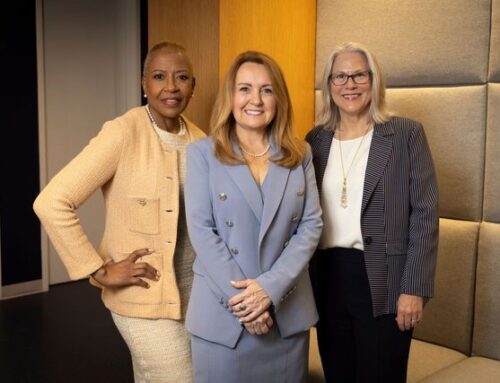It’s plain to see that Debbie Evans Yarger, principal at Wallace Elementary, takes great pride and enjoyment at the diversity she sees in students and parents at her school. Walking through her halls, she may find students whose parents graduated from Lake Highlands High School – possibly even Wallace – sitting in classes next to children who escaped war-torn countries and unimaginable conditions.
“We’ve got kids who’ve been living in refugee camps in Thailand and, until recently, never held a pencil, never used an indoor toilet, never held a breakfast tray,” she told me as smiling, well-behaved children walked down bright corridors.
In the six years Yarger’s been principal, she’s seen big changes.
“Our economically disadvantaged population has greatly changed with the influx of the Burmese refugees,” said Yarger. “We have a sizable number coming from the same area – we’ve gone from 33 kids to 152 – and that is great because they have similarities. It’s just a different level of poverty.”
The children from Burma, a country renamed Myanmar in 1989 by the military dictators who took it over, now make up about 20% of the school’s population. The children are bright and enthusiastic, Yarger says, and the parents attend school events, though they don’t understand a word of English.
It hasn’t always been easy.
There are 57 dialects spoken in Burma (students primarily speak Chin, Karenni, Karen and Burmese) so incoming students and parents struggle to communicate with teachers and with each other. Some cling to the hope they’ll soon go back to the home – and the family – they had to leave behind.
To help with the transition, Yarger hired Juna Saw, a liaison who had been a Burmese refugee herself and speaks two dialects, and an additional ESL teacher to help students master English. (Wallace already had about 180 students, mostly Spanish speakers, for whom English was a second language.)
“I think our community has done a fabulous job of welcoming these parents and families. It has really broadened our horizons at school. Our parents have coat drives on their own [a cold day in Burma is 70 degrees], and they organize a summer school which our teachers volunteer to teach for – it’s amazing. Prestoncrest Church organized a shoe drive and other groups help out. In the settlement process that brings them here, they are given A towel and A dish, then in three months they are expected to be self-sufficient. I’m very proud of the way the Wallace community welcomed them. They are a part of our school.”
“We feel that, every year, every child deserves to grow at least one year academically,” Yarger told me. “Of course, that depends on where their starting point is. Many didn’t go to school in Burma or in the refugee camps, so they may have missed the foundational blocks. They’ve got gaps.”
Yarger let me sit on a session of fifth graders, who were being coached by ESL teacher Diane Royer to give an oral presentation to their classmates. One truth is universal – fear of public speaking – but these students were prepared and nervously excited.
“These kids are super-smart,” said Yarger, while the students beamed with pride. “If I had to go to Burma or Thailand and take a test in their language, I would make an F!”
Picturing the shoe on the other foot made those kids’ day.
If you’d like to help the Burmese refugee students at Wallace Elementary, visit the PTA’s website here. The PTA hosts fundraisers to aid students and their parents, plans events to bring the community together, and supports hard-working teachers throughout the year.









